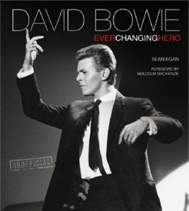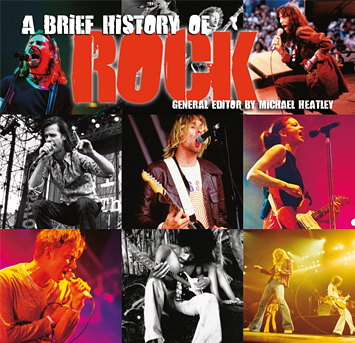1899–1974 American composer Although his heartland was the chiaroscuro world of jazz, Ellington transcended its boundaries, frequently lauded as ‘America’s greatest living composer’. A fine pianist, his keyboard skills were overshadowed by his writing abilities – evident in a multitude of jazz standards – and by his arranging. With the Ellington Orchestra he created dynamic unison passages using ...
Universally acknowledged as one of the twentieth century’s emblematic composers, Edward Kennedy ‘Duke’ Ellington used his long-standing touring orchestra as a tool to create wholly unique tonal colours and a distinctive harmonic language in jazz. His career was characterized by the close and long-lasting relationships that he struck up with particular musicians and other figures from the music business, ...
(Guitar, vocals, b. 1948) Robillard’s grasp of blues and jazz has kept him in demand since he founded Roomful of Blues in 1967. He was born in Woonsocket, Rhode Island and was influenced by Bill Doggett, T-Bone Walker and many others, absorbing the fine details of playing and arranging. He left Roomful in 1979 for a ...
(Banjo, comedian, 1901–86) DeSoto, Missouri-born Benjamin Francis ‘Whitey’ Johnson was, for decades, one of country music’s most popular comedians. He appeared on the Renfro Valley Barn Dance, in Kentucky in the late 1930s and starred on an NBC network radio show called Plantation Party in the early 1940s. He also appeared frequently on the Grand ...
Composed: 1911 (re. 1912; 1918) Premiered: 1918, Budapest Libretto by Béla Balázs, after a fairy-tale by Charles Perrault Bluebeard and Judith appear in the doorway of his castle. She has left her family and declares she will never leave him. He closes the iron door. She offers to warm the stones and let in the light. There are no ...
A musical ensemble is a group of two or more musicians who have come together to play music. In theory, an ensemble could contain any number of instruments in any combination, but in practice, certain combinations just don’t work very well, either for musical reasons or because of the sheer practicality of getting particular instruments and players ...
The flugelhorn developed from the bugle, a signalling horn used in the Middle Ages and made out of bull or ox horn. This developed into a large, semicircular hunting horn made of brass or silver that was used by the military during the Seven Years’ War (1756–63). History Wrapping the horn around itself once, so the bell pointed ...
The saxophone occupies an unusual position in that it is a bespoke instrument that has barely changed since its creation. Although it does not occupy the position in the orchestra its creator had envisaged, Adolphe Sax’s invention has played a central part in music ever since it burst on to the scene in the 1840s. Sax’s father, Charles, ...
Like a great river that runs endlessly, forming numerous tributary streams as it flows, jazz continues to evolve over time. And no matter how far the River Jazz may flow from its source – whether through stylistic evolution or technological innovation – the essential spirit of the music remains intact. Granted, the more academic and esoteric extrapolations of ...
(Piano, b. 1934) Born Adolphe Johannes ‘Dollar’ Brand in Capetown, South Africa, Abdullah Ibrahim successfully fused African rhythms and lilting melodic lines with the piano styles of Duke Ellington and Thelonious Monk. In 1960, with trumpeter Hugh Masekela and others as the Jazz Epistles, he released the first contemporary South African jazz album. The racial climate ...
(Tenor saxophone, 1909–73) Ben Webster served an initial apprenticeship in ‘territory’ bands in the Southwest (including those led by Benny Moten and Andy Kirk) before moving to New York in 1934. He recorded with Billie Holiday and worked with a succession of notable bandleaders before joining Duke Ellington in 1940. He was a key member of Ellington’s legendary band of ...
Benny Goodman was the first of the great bandleader virtuosos of the 1930s to achieve global success. Through a combination of personal connections, nerve, enormous talent and sheer luck, he parlayed a sequence of opportunities in 1934–35 into a payoff that changed American music. After forming his first band in New York in 1934, he won a ...
Joseph Vernon Turner was born on 18 May 1911 in Kansas City, Missouri. He dropped out of school after sixth grade and worked with blind singers on the streets. The blues was in the air in Kansas City and when Turner joined in with the street singers he would make up blues lyrics. Turner was functionally illiterate and never learned ...
(Drums, 1910–51) Catlett was one of the most well-respected and versatile jazz drummers of the 1930s and 1940s. He played in a variety of ensembles under such luminaries as Benny Carter, Fletcher Henderson, Benny Goodman and Duke Ellington, before going on to join Louis Armstrong’s All-Stars. Catlett’s remarkable adaptability enabled him to play in a wide range ...
(Bandleader, vocals, entertainer, 1907–94) Cabell Calloway’s orchestra was one of the most successful black bands of the 1930s and by the end of the decade it was home to some of the finest jazz soloists. He arrived in Chicago in the late 1920s and found his niche as a singer, then went to New York, where ...
AUTHORITATIVE
An extensive music information resource, bringing together the talents and expertise of a wide range of editors and musicologists, including Stanley Sadie, Charles Wilson, Paul Du Noyer, Tony Byworth, Bob Allen, Howard Mandel, Cliff Douse, William Schafer, John Wilson...
CURATED
Classical, Rock, Blues, Jazz, Country and more. Flame Tree has been making encyclopaedias and guides about music for over 20 years. Now Flame Tree Pro brings together a huge canon of carefully curated information on genres, styles, artists and instruments. It's a perfect tool for study, and entertaining too, a great companion to our music books.

David Bowie
Fantastic new, unofficial biography covers
his life, music, art and movies, with a
sweep of incredible photographs.


